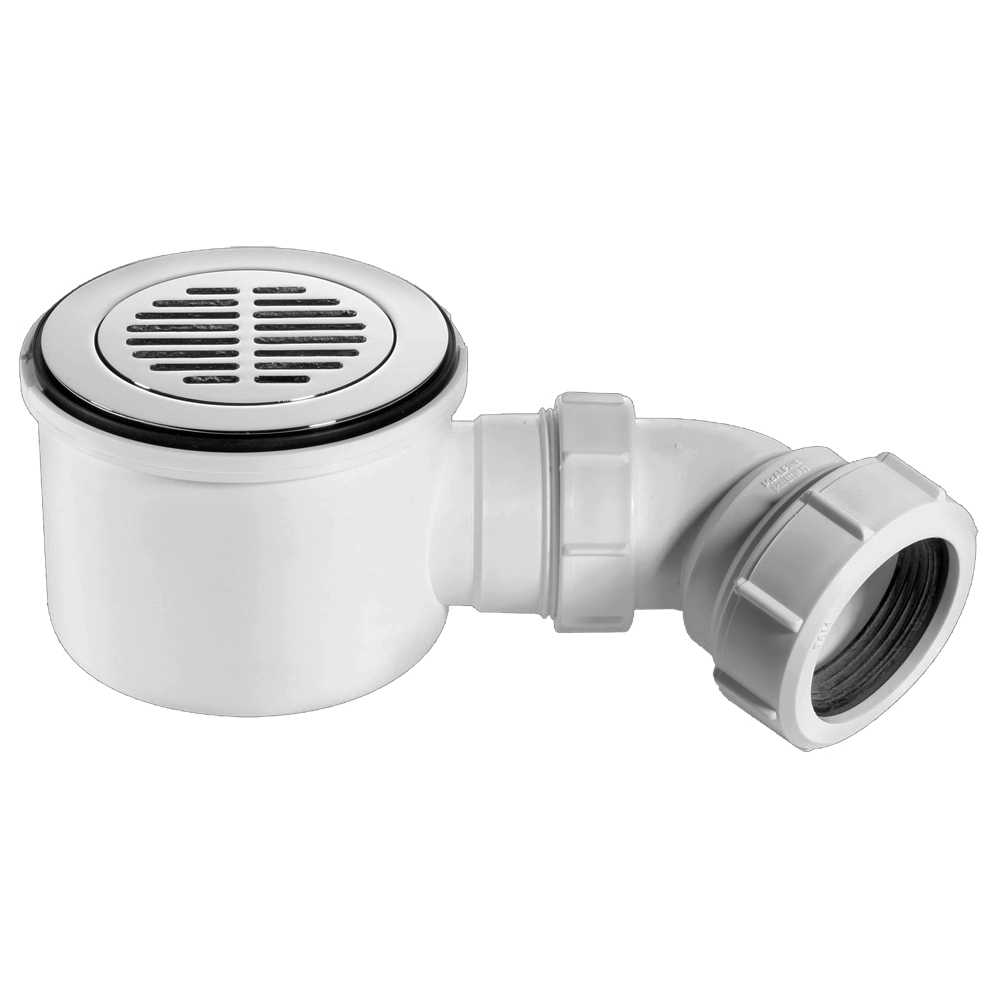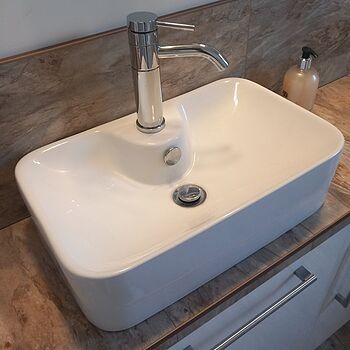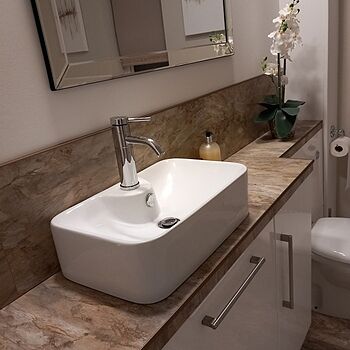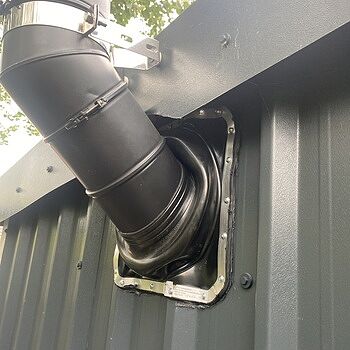A shower trap is one of those little things that can make a huge difference to your shower experience. Nothing could be more irritating than dirt and blockage spoiling your shower room. Luckily, that’s where shower traps, also known as shower wastes, come in.
The question is:
How does a shower trap work?
To help you out, at Plumbing Superstore we put together this handy guide.
Here’s what we’re going to cover.
Table of contents:
- What is a shower trap?
- How does a shower trap work?
- How to clean a shower drain trap
- Keep your shower room neat and tidy
What is a shower trap?

Like similar plumbing supplies, shower wastes and traps protect your shower from inconvenient drain blockages by retaining objects such as hairs and stopping them from being swept down the drain. As a result, water can easily drain, without any overflow.
The shower trap is connected to the underside of the shower tray under the floor. It’s similar to the trap in your kitchen sink and fulfils the same purpose, allowing water to freely drain out into sewage systems quickly and easily.
All in all, it’s a vital if somewhat underappreciated component of a well-functioning shower drainage system.
If water can’t drain properly, leaks and other types of damage to your shower room might occur, and over time these issues will become bigger and more costly to fix.
How does a shower trap work?
There are several types of shower trap, including the shower drain P trap. However, S-shaped traps are the most popular choice. The main difference between these types of shower drain solutions is the width of the tray and the flow rate.
Typical flow rates are 11.5 litres per minute, 24 litres per minute and 54 litres per minute, but other options are also available.
You might be wondering:
Should there be water in the trap shower?
You might be surprised, but the answer is yes. Shower waste traps are designed in a way to always have a little water sitting in the shower tray in order to prevent any malodorous gasses from the sewer to enter your bathroom.
So, if you were wondering how does a shower trap stop smells, you have your answer.
When shower water flows into the shower drain pipe, it creates a vacuum that might slow down its discharge. To solve this problem, vents are fitted to allow air to move continuously along the water flow.
The shower base slopes downwards in the direction of the drainage hole to ensure water moves this way by force of gravity, eliminating any build-up of soapy water that you might slip on and injure yourself.
How to clean a shower drain trap
In order for your shower waste to be able to function properly, it needs to be kept clean and free from any hairs or dirt.
But how do you access a shower trap?
It’s quite straightforward, actually. All you need is a screwdriver, a piece of cloth, a spray bottle and some white vinegar for the actual cleaning.
One of the popular online queries for this topic is ‘how to remove shower drain trap’. We can tell you here:
Start by taking the cover off the waste. Use the screwdriver to remove the collected hair and dirt from inside the cover. Then unscrew the white part (the eau de trap) from the cover itself.
Once you’re done removing the shower waste trap, pop the parts in a bucket full of soapy water and rinse them. Then, mix water and vinegar in the spray bottle and spray the shower waste and wipe it with a cloth until it’s clean.
Once you’re satisfied with the level of cleanliness, simply reattach the two parts of the shower trap and put it back into place.
That’s it! You’re done!
Keep your shower room neat and tidy
Shower traps and accessories are essential to prevent blockage and potential damage to your drainage system. What’s more, they provide you with a comfortable, safe, hassle-free shower experience.
And now that you know the answer to the question of how does a shower trap work, you can fully appreciate this humble servant in your bathroom.
Make sure you clean yours on a regular basis, and you’ll soon forget all about standing water in the shower.



















